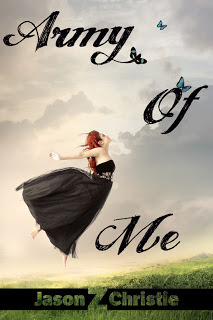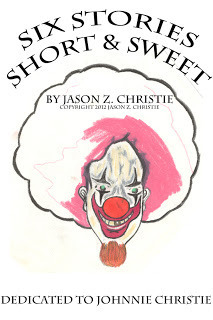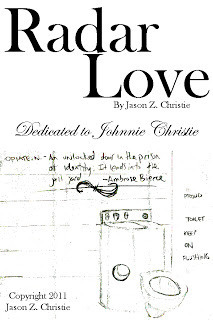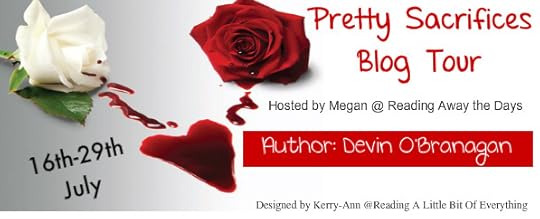Gwen Perkins's Blog, page 4
September 11, 2012
Excerpt: Empyreal Fate
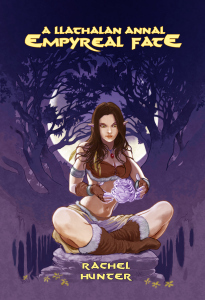 I’m very pleased to have an excerpt today from Rachel Hunter’s Empyreal Fate, a fantasy novel that is sure to appeal to those who love the epic works of writers like J.R.R. Tolkien and T.H. White. This tale of love, hatred, and war begins with a forbidden romance and ends… well, I’ll leave you to explore for yourself.
I’m very pleased to have an excerpt today from Rachel Hunter’s Empyreal Fate, a fantasy novel that is sure to appeal to those who love the epic works of writers like J.R.R. Tolkien and T.H. White. This tale of love, hatred, and war begins with a forbidden romance and ends… well, I’ll leave you to explore for yourself.
From the Novel:
Darrion stared, dazed, into Amarya’s face as she loomed above him, concern defining her frame. Lifting himself, he sat, uncertain how he had come to lie upon the ground. He did not remember falling; he had no recollection.
“You did well,” the elf congratulated, extending a slender hand.
Darrion rubbed his head, feeling a tenderness that had not been there before. “What happened?” he asked, taking her hand and rising.
“I saw not of your mind, but from what I could figure, you gained entrance to the thoughts of a rambling oak. I know this to be true, for I could see your eyes swimming beneath the lids. Such does not occur unless a connection is made.” Amarya beamed, eyes sparkling with pride despite her pupil’s faint. With eager strides, she began smoothing the creases of his tunic. “You drifted too far, however – missing the mark. Your focus broke upon more than a single entity; your mind roamed in places it was not meant. As a result, your consciousness receded, and your celestial bond forged hollow spaces to compensate. Once that barrier snapped, the voices of many within the Illex, not merely the trees, poured through you. It was an overload of understanding – most mortals cannot handle such. But no need to fret; you’ve far surpassed the most capable of beginners. I am simply surprised you made contact at all.”
Darrion stepped back, feeling the lightness of his chest. With clouded thoughts, he speculated the feat he had barely attained. Few words could describe his awe – the confusion – that enveloped him. Dizziness clothed him as a tumbled reed.
Resting one palm against the bark of an oak, he listened – intent – as though searching for a beating heart against the trunk. Despite his wavering state, he was glad for Amarya’s tutelage. This feeling… it was almost surreal.
“To my knowledge, never has a human discerned as much as you.” Amarya’s pale hand sought Darrion’s shoulder, and he melted at her touch. “I’m uncertain what it means – for indeed, your ability comes as no coincidence… But the mortal mind proves oft unable to comprehend the spiritual realm. Not that it’s impossible, but man forgets his possession. He knows not of the awareness beyond material senses. You, Darrion, are not like other men. You – you’re different.” She shifted her jaw, examining him as if for answers.
“It’s true… I never knew the depths to which magic strayed,” Darrion murmured, almost trembling from his ethereal venture. “I used to think it all frivolous tricks of the tongue.”
“Not quite,” Amarya offered. “Those who perform incantations, as you suggest, are sorcerers – mere magicians who rely on handholds and false words to create masked illusions. In some cases – nigh, but rare – such illusions become reality. Regardless, the art lacks in form. Words are the derivation of mortals – a human contrivance, unnecessary for understanding. They are not real, as nature is real. Nay, words are but crude concepts – trivial in the matter of divine understanding. What is meant in one tongue may be opposite in another. How can a concept so unsure create something so pure? The answer is simple: it cannot.”
About the Author:
Rachel Hunter has always been fascinated with words and the intricate way in which they combine. Since a child, she has been an avid writer, winding vibrant tales and elaborate stanzas on folded bits of paper. As the years passed, her love of words never died; her adoration for reading fared no equal. Always with her nose in a book, Rachel took fondly to works spanning all genres. Yet it was the compelling grasp of fantasy and science fiction that wrenched her fascination above all.
Find Out More About Rachel and Her Novels:
Blog: http://www.rachel-m-hunter.blogspot.com
Website: http://www.rachel-m-hunter.yolasite.com
Facebook: http://www.facebook.com/pages/Rachel-Hunter/170131499766376
Twitter: http://www.twitter.com/young_author
Amazon: http://www.amazon.com/Empyreal-Fate-Llathalan-Annal-ebook/dp/B007WWB24W
Goodreads: http://www.goodreads.com/author/show/5762735.Rachel_Hunter



September 10, 2012
Guest Post: It Comes in Slices! (Serial Fiction)

A Word on Serial Fiction
by Michael Shean, author of Bone Wires
Since Scheherazade held back Shahriyar’s axe, the art of serial fiction has been one of suspense and anticipation. Through the separation of a larger work into smaller, regular sections, the serial can allow an author to introduce his readers to a smaller story alongside the development of other works – and, if he or she is good at it, can ensure that their tales are never out of the minds of readers. That, as you can imagine, can be a very important thing.
Serialized fiction can be traced back to One Thousand and One Nights, which in itself consisted of a string of serialized novellas. Wrapped up in the frame of Queen Scheherazade’s attempt to stave off death at the hands of her bloodthirsty husband, the collection of tales contains some of the most memorable works of short fiction in history - Sinbad the Sailor and Aladdin being some of the most prominent examples. With the development of movable type in the 1600s, episodic narratives became more and more available; given the expense of books at the time, publishers were very interested in expanding the market while keeping prices down. In the 19th century, popularity exploded during the Victorian Age when growing literacy, advances in technology, and the expansion of distribution pooled together to make serialized fiction a powerful force in getting literature of all kinds in the hands of as many people as could afford it. Henry James, Herman Melville, Gustave Flaubert, Fyodor Dostoevsky, and of course the inestimable Charles Dickens all found great success using the serial model. In modern times, the rise of the Internet and the Web allows everyday people to write serialized fiction and post it on their own websites as they desire; all that’s required is an audience, something which grows easier to secure through every day through social media and the like.
The serial structure can be very challenging. When I wrote my second novel, Bone Wires, it was released as a serial on the website of my publisher, Curiosity Quills. Being a detective story, it was relatively simple to set up through a series of episodes – I eschewed writing a chapter at a time, mostly because my schedule wouldn’t allow it and also because the flow of the work was better without attempting to expand things in a synthetic way. Aside from ensuring that episodes are released on a consistent schedule, this is the major secret behind serialized fiction: ensuring that episodes are relatively short, exciting, and always contribute to the greater whole. There should be no such thing as a ‘filler’ episode; with a serial work, when deadlines are absolutely vital, there is always the temptation to try and pack a story in with material that may be ‘soft’, or does not strictly further the flow of the story or develops the characters. But consider something: most of you reading this have favorite television shows. How do you like it when the flow of the story gets broken by a random filler episode? The same applies with fiction – anything necessary is annoying, breaks the flow of the work, and generally makes your audience unhappy. Nobody likes it when a writer’s work feels lazy.
Putting the tyranny of deadlines and the perils of ‘fatty’ writing aside, however, the serial can be a major boon for an author’s career. Consider: you might be working on a larger or more complex work, but that keeps you out of the proverbial game for four to six months. Your readers might be panting after your next work, but in the absence of an alternative there’s room for someone else in their proverbial heart of hearts. Writing a serial alongside that ensures that readers have something to enjoy – remember that writing has its business side, and ensuring that you’re forefront in the mind of your readers is absolutely necessary for when that next big novel drops. Not only that, serial fiction gives an author the ability to stretch their creative wings, to reach out and try new things and keep their minds fresh while still meditating on their primary work in progress. I’ve found that being able to work on another work to break up the occasional slog is also very effective at staving off writer’s block.
Since the completion of Bone Wires in its serial form, it has been released as a complete novel. I don’t have current plans to start a new one, but that’s not because this wasn’t rewarding; my schedule just doesn’t allow for it. You can be sure that when it does, however, you’ll see another serial tale with my name on it out there for all to see.
Writing a work of serial fiction can be very difficult, but don’t let the potential obstacles keep you from working that magic; as long as you can keep things regular and don’t veer into the land of filler, serials can be among the most rewarding methods of writing for any author, veteran or newly-established. You don’t have to take my word from it, though. One need only to consider the role of those mentioned above to see the power that the serial can bring.
About Bone Wires:
In the wasteland of commercial culture that is future America, police are operated not by government but by private companies.
In Seattle, that role is filled by Civil Protection, and Daniel Gray is a detective in Homicide Solutions. What used to be considered an important – even glamorous – department for public police is very different for the corporate species, and Gray finds himself stuck in a dead end job. That is, until the Spine Thief arrives.
When a serial killer begins harvesting the spinal tissue of corporate employees all over the city, Detective Gray finds himself plunged into the first truly major case of his career. Caught in a dangerous mix of murder, betrayal and conflicting corporate interest, Gray will find himself not only matching wits with a diabolical murderer but grapple with his growing doubt toward his employers in the dawning months of the American tricentennial.
A thrilling mystery set in the same world as the Wonderland Cycle, Bone Wires is a grim trip into the streets of the empty future.
Purchase:
Amazon (Kindle) | Amazon (Print) | B&N (Nook & Print) | Books-A-Million



August 30, 2012
Guest Post: Designing a Modern Day Vampire by Janiera Eldridge
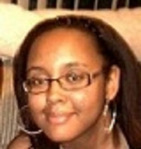 Today on A Few Words, I’m happy to have Janiera Eldridge, author of Soul Sisters, an urban fantasy novel about African-American twin sisters. Ani and Dana who have a rather unique secret: one sister is human while the other is a vampire. While the sisters have lived peacefully with each other for many years, one fateful night changes both their lives forever.
Today on A Few Words, I’m happy to have Janiera Eldridge, author of Soul Sisters, an urban fantasy novel about African-American twin sisters. Ani and Dana who have a rather unique secret: one sister is human while the other is a vampire. While the sisters have lived peacefully with each other for many years, one fateful night changes both their lives forever.
Read on to find out more about how Janiera tackled the question of how to create the vampires in her world!
Designing a Modern Day Vampire
by Janiera Eldridge
Now that vampires are hotter than ever some people complain that they’re tired of vampires. I personally never get tired of them because I read many different genres of books. I very rarely read vampire books back to back so when I do read them, their exciting to me. I can see how some people are a little burnt out though especially if they pay attention to the media.
Although it’s become the cool thing to hate Twilight, it has actually been very influential in my writing. I don’t believe my writing styles to be like Stephanie Meyers but, Twilight encouraged to me to come up with a unique angle on vampires. Vampires are fictional so you can write them anyway you want and Meyers managed to put a new spin on vampires which is why she is popular now. So whether you hate her or love her she did something different and that in the end is what counts. When I wrote my story I set out to do something different which means I had to come up with my own terms of what a vampire meant in my book.
Here are some traits I designed my vampires around that might seem a little different to some people: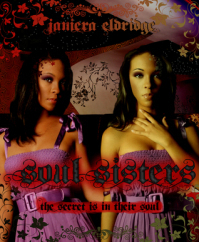
My vampires are 100% day walkers. They can’t be in direct sunlight or it will burn their skin and leave terrible scars. They can walk around in indirect sunlight or in direct sunlight only if they are dressed in all wool clothing to block out the sun.
They are usually gorgeous creatures who are examples of absolute perfection. However, when their fangs descend, you know there will be trouble! Their skin often turns grey and their features grow grotesque! They look normal doing day to day activities but deep inside a monster is being stiffened.
Not to give any spoilers away but every vampire has a human twin; you have to read book and two to see how that works out.

Every vampire has a super power. Although this is a common trait in vampire stories, it is still a cool thing to have. Who wouldn’t want to read mines or see into the future?
Holy water doesn’t scare these vampires but silver and diamond spurs spell trouble!
Vampires and werewolves were made by the same people but are now enemies, another mystery you have to read the books to learn the answer to.
Although my next series will not be about vampires ( it will be about serial killers), I don’t think I will ever get tired of this genre, especially if new and exciting authors keep expounding on this classic folklore.
What are some traits you enjoy in your vampire novels?
More about this great novel under the cut!
Synopsis:
Soul Sisters is an urban fantasy novel about African-American twin sisters Ani and Dana who have a rather unique secret: one sister is human while the other is a vampire. While the sisters have lived peacefully with each other for many years one fateful night will change both their lives forever. When a drunken man tries to attack Dana (the human sister) Ani (the vampire sister) protects her sister with all of her ferocious power.
However, when the vampire’s leader Donovan finds out about the public display he calls for the sisters to be assassinated for disobedience. Ani and Dana now are in for the fight of their lives to protect each other as well as the lives of their dedicated friends who have joined them on their mission for survival. If Dana and Ani can make it through this time of uncertainty, Ani can take her new place as vampire queen. Soul Sisters is expected to be a trilogy. The book also features a multicultural cast of characters that brings a new edge of chic to the vampire world.
Urban Fantasy
Published by Mystic Press
Release Date: August 18th, 2012
Buy Links:
(You can also read an excerpt of the book on Amazon)
Amazon (Kindle) -$2.99
Amazon(paperback)-$10.00
Smashwords(various digital copies)-$2.99
Barnes & Noble (Nook) $2.99
Paperback(Createspace)- $9.99
About the author:
Janiera enjoys feeding her book addiction when she’s not writing. She is also a book blogger at Beauty and Books where she mixes being a book nerd with keeping things chic. When not reading or writing, she is freelance writing in the entertainment industry. Soul Sisters is her debut novel.
Connect with her:
Blog: Beauty and Books: http://janieraeldridge.blogspot.com/
Twitter: http://twitter.com/lazenbeauty
Facebook: http://www.facebook.com/janiera.eldridge.1
Pinterest: http://pinterest.com/jaeldridge18/
Goodreads: http://www.goodreads.com/book/show/13640540-soul-sisters
And don’t forget to visit the new CafePress store for Janiera’s novels! http://www.cafepress.com/jemerchandise



August 25, 2012
Guest Post: A Year of Self-Publishing Mistakes
Today’s guest post comes to us from author Jason Christie. Jason’s been featured on A Few Words before. I asked him to come back to talk with us about his experiences over the past year as a self-published author. This article is a honest, insightful view into the process and a definite recommended read.
Jason’s novels are available through Amazon and his blog, Write to Life, is another great place to hear more of his thoughts on the industry and read more of his writing.
A Year of Self-Publishing Mistakes
by Jason Christie
I’m not really comfortable trying to tell people how to write. So I’ll probably just talk about book stuff and maybe work in some random writer things along the way.
I confess to doing everything wrong when I first self-published. I sort of edited and published four novels in a month, trying to get online before Christmas of 2011. Mistake number one. Well, a whole subset of mistakes in that alone. Rush books out in a month, pay for it all year long…
But another problem with that approach is that you get a real boost from releasing new books. A book a month would have a been a much more effective approach. Most of the impact I could have had with my debut was squandered.
Of course, I also had no blog, website, or, well, any sort of support infrastructure in place whatsoever. I did have various pockets of notoriety to draw upon, having achieved some levels of fame in the underground rap and metal worlds, been published on Slashdot.com and Boingboing.net. I was already listed on Wikipedia, Internet Movie Database and other sites. None of those things really translate into book readers.
Previous to publishing, my idea of social media was reminiscing about Usenet, and the days of flaming and trolling. I would much rather insult people than try and befriend them, believe me.
Oh, my covers were pretty crap, too. Now, the muse and I can look at the old covers and point out all sorts of significant imagery that is quite relevant to the book itself. But what you see and the reader sees are worlds apart. Forget what you think is good, early on in the book cover design phase. Look at what is eye-catching from a sales standpoint.
Because I’m sort of ashamed to say it, but once you’ve poured your life and soul into a book, it becomes a commodity. Unless you are independently wealthy or enjoy your day job, you need to look at selling books. Not above art, but parallel to it. The art of selling, as it were.
Now, after my first year here in the indie publishing trenches, I’ve pored over most of my books ten times since then, at least. I found more errors in Stephen King’s UR than in most of my much longer books. That’s progress, for sure. I’m to the point where I don’t feel the insane urge to reword every sentence. A good feeling.
Along the way, you start to discover weak points in your writing. Like, glaring weak points that you’re too close to to see. Adjectives and adverbs start to stand out as deletable material, along with the 33% overage in commas that seems common to new writers. Things like that.
Now, it’s to my advantage that I’m sort of tech oriented, so at least the book formatting was simple enough to me that I could learn it on the fly. Except I’m terrible about having multiple files and revisions, and just sort of losing track of what’s what. Expect problems in the future if you don’t settle on a sane dating and numbering system for manuscripts, or some other workable method. There are few feelings worse than losing an entire round of edits to a simple mistake.
This is compounded when you make multiple versions for different ebook sites. At one point, I forgot that while I was uploading .DOC files to Smashwords, I was uploading filtered HTML to Amazon. Something like that. Suddenly things went awry when I swapped formats on them one day.
Of course, all the while, you should also be writing and editing more books, bear in mind. Oh, and promoting. And getting reviews.
But like a twelve-step program for recovering author screw-ups, I’m proud to say I have turned things around to a large degree. And one of the biggest steps was biting the bullet and paying for a few cover designs. Money well spent. The price of decent book covers has really come down, and there are many talented artists on the market.
I keep telling people, “Don’t wrote ebooks. Sell covers to people who write ebooks.” It’s a growth market.
But if you plan on writing more than one book, and I really think most people are, I believe your name should be developed as a recognizable logo. That’s what I did in my case, and I’ve never been happier, cover-wise. I won’t clutter up Gwen’s blog with a bunch of my covers, but you can follow the saga at http://jasonzchristie.blogspot.com.
I will include one I did myself, because I am encroaching on the fantasy genre next…
This was stock art from shutterstock.com.I’m relatively sure it’s been used before, maybe more than once. But I really liked it, and did a little to make it my own. I played with the text placement a lot to get it just right. Her hair and lips are enhanced to correspond better with the storyline.
Buying the logo sort of gave me the confidence to try and make some quality covers myself. Just start with a good template, and try to find the perfect stock photo or other elements you need. You’d be surprised at how cheaply you can acquire some very expensive looking images. If you amortize the logo design across ten books, the above cover cost me $6, total.
I don’t recommend going all gangsta with your cover art like I did on my first round of covers. I do still have an image that came from worth1000.com, and I’m seeking a replacement for that one. The rest are all legit, which is sort of good to know. Until Don Henley catches up to me about his lyrics…
By the way, my daughter says my uncharacteristic new cover is a trojan horse, a trick. “They’re going to think it’s a real fantasy book,” she says.
It is. So what if there’s a time-traveling wizard who snorts ground unicorn horn, and a academy for princesses where the economy is based on… Nevermind. Sounds like fantasy to me. But I guess it’s probably closer to Terry Pratchett meets Quentin Tarantino than Tolkien waltzing with Anne McCaffrery.
Let’s see, what else did I do wrong?
Oh, yeah. I launched a series with only the first book written.
After the Dark Tower dark years, where many of us waited in dread for Stephen King to bother to pick up a pen and finish his epic gunslinger saga, some people are reluctant to buy into a series unless several or all of the books are published.
I’m happy to announce that I now have two series, with two books in each, so far. It’s a start. Penultimate Hustle: Japan is the sequel to Radar Love, my romance/adventure title. Cure for Sanity is an off-shoot of Perfect Me, my funny sci-fi novella. PH:J might be my best work yet. On the other hand, so might CfS. You’ll probably have abbreviations for your novels eventually.
Check out the samples here. They sort of support what I’ve been saying about editing, formatting, covers, etc.
What I’ve been working on lately is trying to give a bit more with each book to make them a better value for the reader. Mostly, I’ve done it with art work. I have access to my own art collection and a very talented and tragic little brother, so I’ve managed to make nice title pages for four of my books so far.
But another way you can do it is to become a typography geek. Check out some of those ebooks that have about four pages of legalese in the front of them. Notice how subtle the typeface is, and how that feel is distributed through out the ebook itself. I would recommend studying some of those techniques and employing them. Not everyone can come up with great original art on the fly. Layout and typography can be learned.
I’m sort of utilitarian in that regard, and don’t pay that much attention to that end of things. But I’d love my text to at least look like literary fiction someday.
I find tables of content really add a lot, even though they are mostly unnecessary with ebooks. I like naming the chapters, and I like reading well-named chapter names in other books, so I try to make sure I always do that for the reader.
Once you have your title honed to a fine point, you can add other little things like a list of your other books, samples and previews of other titles, or even a list of other authors you recommend. Flossin’, we call that in the hood, fifteen years ago. Never.
In summation, it takes about a year to really get good at making quality ebooks if you’re making it up as you go along. I’m 10 months into it. Luckily, my writing has carried me through the initial learning phase of self-publishing relatively unscathed. It would have been career suicide for some less fortunate souls. Be warned. Don’t make things hard on yourself. Unless you love a challenge.
Now to do something about my terrible blurbs…



Character Interview: Autumn Augustus of Heaven’s Fate
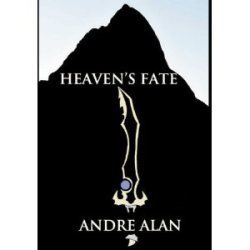 Today I’m pleased to be interviewing Autumn Augustus, a character from Andre Alan’s epic adventure, Heaven’s Fate.
Today I’m pleased to be interviewing Autumn Augustus, a character from Andre Alan’s epic adventure, Heaven’s Fate.
A little about the novel:
Thame Elliot, an expert Rietsu martial artist, is consumed with thoughts of avenging his father’s death and rebuilding the legendary Tundra Sword. Little does Thame know that his aunt, the first empress of the human continent, Eioda, Autumn Augustus, has set the nation on a course that can only lead to war with the Orcs. The mystical inhabitants on the planet, Threa have been plunged into a struggle for the ancient artifacts buried in the mysterious, Consummate of the Trust. Not only that but his aunt is hell bent on marrying him to a corrupt military admirals daughter while Thame’s spiritual guardian, Masaya from the Astral Plane tries to manipulate him in order to keep the heavens from falling apart. The fate of mankind rest in Thame’s young hands but does he even want the responsibility that goes along with being the chosen one? Or will Thame’s spiritual twin, imbued with dark powers granted by the evil one, assassinate him before he can fulfill his destiny?
Without further ado, I’m happy to present Autumn Augustus!
Gwen: Tell us a little about yourself, Autumn. Where have you come from? What do you want out of life?
Autumn: As you wish, my name is Autumn Clementine Augustus. I am from Las Anglas, Eioda where I served as Rear Admiral of the Western Fleet before joining Parliament.
What I want is tough to answer since my job for so long has been to take orders. Now as empress, I seem to take orders from the Eioda people. But what I wish for is simple, for my people to prosper and for my family to be happy and healthy.
Gwen: The novel opens with talk of your brother Alexander being a traitor. What’s the real story there?
Autumn: Alex was a hero, a patriot, a one of a kind leader. He was betrayed, plain and simple. That day was like a living nightmare. I blame myself though. If I would have done more than he could still be here with his son, Thame.
Gwen: Your nephew, Thame, refuses your offers of help. What do you think motivates him?
Autumn: Revenge motivates him. A white hot hatred over losing his parents at such a young age. I believe that he is also angry at himself for not being able to help more I think, but he was so young.
Gwen: How do you feel about Thame’s behavior?
Autumn: Well I don’t think there is anything too extreme about his behavior. Sure, he can be a bit snarky at times, some may say that he is a little selfish, and a bit of a jerk but he truly does mean well. I blame myself for spoiling him growing up.
Gwen: If you could change anything about your current situation, what would it be?
Autumn: If I wanted more time, then I would wish to be born in a different age but if I could change one thing, it would be fate. If I could change anything, it would be to have Alex alive. I would change the fact that the Tales of Arcadia have come to incorporate everyone that I care about.
Gwen: What do you think lies ahead for Thame?
Autumn: I think that Thame will accomplish all of his hopes and dreams. I think it will be a rough road ahead, full of bumps, ups and downs but overall a great career and a long, happy life.
To check out this novel (and hear more of the characters’ stories), visit Heaven’s Fate at Amazon.
You can find out more about Andre Alan, the author of Heaven’s Fate, at one of these places:
Website
Twitter: @AndreAlanAuthor
Goodreads



August 19, 2012
Writing Games: “Going Shopping”

Courtesy sxc.hu
On an old blog of mine, I used to post little writing exercises and dare others to do them. It’s been a while and it’s a fun thing to do so I thought that I’d place an old prompt here and see what happens.
Write about a shopping list as if this list had much more meaning than it could possibly hold.
When you think about the prompt, realize that you don’t have to take any of the above literally and can adapt it to fit your own purposes. We’re not in this to stress out so simply freewrite on this prompt with a goal of 500 words or less. The idea is that you’ll scribble it out over the weekend and see where it takes you.
Feel free to share in your journal, keep to yourself, or comment here. If you like the meme, please link back to it! I’d love to share some of your links so please share them with me here, on Twitter or on my Facebook wall.
My unedited example from a freewrite is below!
Clydie leaned against the back of the wall and watched the rain plink through the stairs above the two girls. Jean was humming in tune with the raindrops, seemingly unaware, as she unknotted her hair with skillful fingers. She combed through the dirt, shaking off dust onto the ground.
“You’re a regular Crackerjack,” Jean said, a hint of laugh in her smile. Clydie wondered what color her hair was under the soot.
“Oh, I dunno about that. You woulda done the same.” She let one leg stretch out, then pulled it back. Staying small was her best defense.
“Don’t know how. The only street I ever lived on was built on a stage.” Jean’s hands flew up before she remembered the stairs just over their heads. She slapped concrete, then winced, pulling them back down.
“You could learn.”
“Not as easy as buying groceries.”
“You ever bought groceries?”
Jean halted after Clydie asked the question. This time, it was Clydie who fought the laugh, a loud snort escaping her before she clapped her hands over her mouth.
They both went very still then, listening for footsteps.
“No, I never,” Jean whispered.
It was a long time until daylight, when they could sleep without fear of the birds overhead. The time would feel longer still if they ticked it off their fingers rather than passing it in talk. Clydie knew this and so she asked, “What’d you buy? If you ever did. Go shopping, I mean.”
“Soap,” was her immediate reply. “How much money I got?”
“Much as you want, I guess.” Clydie answered, even though she’d never seen more than a nickel note.
“Food,” Jean thought aloud. “And seeds so I’d have food later. A book to teach you how, with lots of pictures. A knife—case all that didn’t work. Stockings.”
“Stockings?” Clydie choked back another snort. “What you want them for?”
Jean grinned. “Just to be wasteful.”



August 18, 2012
Author Interview: Sumiko Saulson
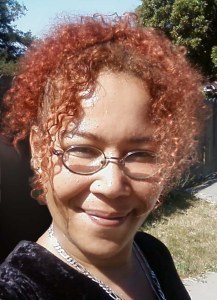 It’s an honor today to welcome Sumiko Saulson to the blog. Sumiko’s novel, Solitude, is a fascinating examination of the lives of diverse individuals isolated in a San Francisco seemingly void of all other human life. In the absence of others, each journeys into personal web of beliefs and perceptions as they try to determine what happened to them, and the world around them. I’m happy to have Sumiko here as we delve into some of the concepts and personal histories behind her novel.
It’s an honor today to welcome Sumiko Saulson to the blog. Sumiko’s novel, Solitude, is a fascinating examination of the lives of diverse individuals isolated in a San Francisco seemingly void of all other human life. In the absence of others, each journeys into personal web of beliefs and perceptions as they try to determine what happened to them, and the world around them. I’m happy to have Sumiko here as we delve into some of the concepts and personal histories behind her novel.
Gwen: You open this story with a powerful scene–that of young Margo folding a paper crane with the knowledge that “only a few, martyred youngsters were able to have their stories told.” She folds the crane not because she believes that she’ll save a life but because she empathizes with the Sadako story and the rough life that the girl had. What inspired you to begin here?
Sumiko: Originally, the story didn’t start with that scene, but with the next scene, which establishes another character Angela’s extreme and catalytic resentment towards her ex-husband. I have a tendency to imagine my books as a movie: I blame film school for that, because I spent a year at Film Arts Foundation’s “STAND” program for first time directors learning about story arch and character development. In the little movie “Solitude” I was imagining in my head, where Gerry is being played by a 1990s version of Bruce Willis, the story needed to begin with a lot more character connectedness than Angela’s two-dimensional hatred. Her pain was a bit too forcefully expressed to allow the reader to relate to her very well. I needed a softer touch at the beginning.
I went back and inserted the prologue about half way through the story, when I was in the middle of explaining Margo’s relationship to Josette and her Chihuahua, Crazy. I realized that because she was written as an agoraphobic shut in, Margo was a character with whom people would relate primarily through her internal life. Giving her rich and interesting internal dialog would make her interesting. That was important because she refuses to leave the house: she is a character for whom a decision to go outside is a tremendously big deal. I was a very introverted child, but I became a lot more outgoing as I matured. That is why I decided to make the reader’s connection to Margo begin in her childhood. You could say that Margo is a character with whom I have certain things in common but whose life takes a divergent course from my own. I felt I could write a more convincing narrative by starting at the period in life when Margo and I would have been the most alike. I used books I read as a child to make this connection.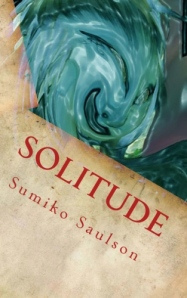
Gwen: There are a number of perspectives that you use to tell this story which makes the world of Solitude incredibly rich with diversity, both in terms of your cast and the scope of the novel. Did you find it challenging to weave a narrative with so many voices? How did you select the voices that you finally used?
Sumiko: The greatest difficulty was in keeping the timeline consistent, because when the narrative switches from one character point of view to another, especially at the beginning of the book, it is talking about something that happens in more or less the same period of time. In the first draft of the book, I switched from perspective to perspective too quickly for some readers to follow. They found it confusing. I was writing these quick-switch edits as an almost reflexive response to my history as a video editor. When you want to show action and excitement in a video or a film, you go back and forth fast, like in a music video. That doesn’t work as well in a novel. The other reason I kept changing points of view quickly was because I hadn’t mastered a way to keep time moving forward when these incidents were occurring at or near the same time. That issue was eventually resolved with the help of the book’s editor, Stephen Douglas.
We worked together to identify a few pieces of writing that would be more effective put together. He had me do a series of re-writes connecting the action during the initial event. For instance, the scene where Shane is on the Bay Bridge when people start disappearing is considerably more action packed than it was the first time around. The same can be said with the scene involving Gerry and the newly feral dogs circling him at Safeway. By the time we were finished with re-writes, the book was 50-pages longer, and the timeline was consistent. Switching character voices in the middle of a major catastrophe such as the event these individuals experience does require a lot of attention to detail with regards to the consistent movement of time. The character voices themselves were not difficult for me: I have been good with characters for quite some time now, but I spent over a decade with great characters that had no story to tell.
Having a story was the hard part.
I’d written a number of shorter works prior to writing Solitude, my first novel. I also attempted to write a novel many years ago, and found myself “stuck” in the middle of it. To avoid getting “stuck” in the middle of Solitude, I developed a rough mental map of where I was going, and how to get to the end. This was my substitute for an outline. It was a notebook filled with character sketches, and I used the traits of any given character to determine how she or he would react in a given situation. That made it easier for me, because when the story wasn’t moving forward, I could switch to a character that would be most likely to react in a way that would cause things to progress and keep me on course.
Gwen: As I was reading, I felt a connection with Margo almost immediately, one that deepened as we progressed into the novel and saw her at an older age. There’s a couple lines that just really hit home for me in particular: “None of these challenges stopped her from making something of her life. In a way, they formed her, created for her a sense of direction.” When I read that, it just resonated. Are there characters that you discovered you had more affinity with as Solitude unfolded?
Sumiko: I am happy to hear that. Margo is a character with whom I have a personal connection due to my own anxiety issues. In a way, I used the character to process a lot of feelings I’ve had related to my disability, and while we are definitely not the same person, we have some challenges in common. I think that my own history deepened my understanding of the character’s challenges. I am not agoraphobic but I do have post traumatic stress disorder and I suffer from social anxiety in crowded places, sort of a lesser version of what she’s dealing with. I wrote her as someone I could relate to, with the hope that the reader might feel the same way. She is not me, but there is enough of me in her for me to feel happy when a reader likes her.
The character I became increasingly connected to throughout the course of the story was Gerry, the homeless guy. He more than makes the most of a bad situation: he acts like a guy who was born to play this role. He’s already used to facing challenges, and he adapts to this situation heroically. The bad situation just happens to have the proper sort of alchemy to bring out the best of him. He’s a diamond formed under pressure.
I also really, really like Rosalind. She was a character I wrote into the story later for continuity, and to keep things moving forward. She is from my parents’ generation, and she sort of embodies everything I have come to love about Baby Boomer chutzpah. She is protective and maternal, but liberated and vital at the same time.
Gwen: Sumiko, I think as authors, we often incorporate small pieces of our own lives into the stories that we tell but they often appear in unusual or surprising ways that are not obvious to anyone who doesn’t know us. Do you agree with me here? Is there a scene with a connection like this that you’d like to tell us about?
Sumiko: Yes. It’s true. The strangest and certainly least obvious connection is between the Chihuahua, Crazy and my calico cat, Marla. I didn’t write the dog as her own character, but readers related to her as such. The dog ended up with her own kind of little fan club – but the dog is based on my cat, Marla. Margo is also named after Marla, and Margo as seen through the eyes of Crazy is exactly as I imagine my cats view me. The sort of impatient affection she has for the dog is similar to my attitude towards my cat: I love her, but sometimes she gets on my nerves, and she was an especially large pain in the butt during the time I was writing the novel Solitude. She was a nine month old feral who had been abandoned by the previous tenant of my apartment. By the time I convinced her to move in she was a year old, which is the age at which the SPCA will formally consider them feral and spay for the catch-and-release program. They said that cats can usually be redomesticated during the first year of life. Almost a year on the dot, she decided to move in. I got her spayed. That didn’t change the fact that she’d started to mark territory, and especially my things because I was “her” human and there is another cat in the home. I got advice from animal experts and they told me to use a spray bottle, so I did. Marla is probably the inspiration for the number of wild evil animals roaming around the San Francisco of Solitude.
When Crazy calls Margo the “Okay Lady” it’s precisely how I thought that Marla felt about me: I mean, I fed her and petted her, but I also let this other cat live in “her” house, and how dare I? I took her to get surgery, and I sprayed her with the water bottle for trying to pee on my blanket, so she might have had mixed feelings about me. Anyway, I think that’s pretty random, and most people wouldn’t make the Crazy/Marla connection even if they knew me.
Angela’s rage over her childless state is more than a nod to my own struggles with fertility. I noticed infertile women or women who regretted not having children showed up on all three of my novels, so I guess that’s something I’ve tried to process through writing.
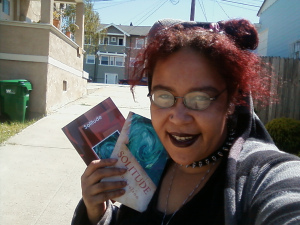 Gwen: Science fiction can be a powerful medium with which to examine contemporary issues. What influenced your choice to tell this story in that way rather than going with another genre? Do you think that there were particular strengths and/or weaknesses in this choice? Did you ever consider telling it in a different way?
Gwen: Science fiction can be a powerful medium with which to examine contemporary issues. What influenced your choice to tell this story in that way rather than going with another genre? Do you think that there were particular strengths and/or weaknesses in this choice? Did you ever consider telling it in a different way?
Sumiko: I didn’t set out to write a science-fiction novel. I intended to write horror, but the novel has been categorized in either genre or more frequently, in both. I agree, science fiction has been a popular platform for issues that people are better equipped to face when they involve alien life or robots. Gene Roddenberry practically made a career out of inserting modern political struggles and wars into “Star Trek”, and a lot of the original series episodes deal with civil rights issues regarding both race and feminism. I take up a lot of these issues, but I would be doing so even if I weren’t writing science fiction because I am a woman of color and we all write what we know.
When I first began to shop it around locally, I found myself in a number of conversations about Octavia Butler, because I’m African American and Russian-Jewish American, and I write multicultural characters. I found the comparison both flattering and intimidating: Ms. Butler is largely responsible for the fact that it is becoming increasingly acceptable for women of color to write genre fiction. For a long time, if you were a black woman, you were expected to only write very serious literary fiction. There was an unspoken rule that we all were going to write like Toni Morrison. It wasn’t okay to write fantasy, or romance.
But the day I decided I was going to write a novel I was reading two books, The California Book of the Dead, by Tim Farrington, an old friend of mine: a work of literary fiction taking place in San Francisco, and Forsaken by L.A. Banks*, an extremely prolific African American paranormal romance writer. The book was number seven in her Vampire Huntress series, so you know: this woman writes a lot. I got about half way through the book before someone stole it off the bar at a karaoke club, but it was one of the two books that inspired me to believe that someone like me could write horror.
And I did. But it looked a lot like science fiction.
Being categorized as science fiction is definitely a boon, horror being a maligned genre. Saying you write horror is almost like saying you write erotica: a bunch of people are going to decide from day one that they are not going to give your work a chance. Anne Rice said that your readers define your genre for you. I think she’s right.
Gwen: If readers want to find out more about you and your work, what’s the best way for them to do so?
Sumiko: I have a website and blog at http://www.sumikosaulson.com. From there, you can learn just about all there is to know about me as an author. I’m also on Facebook, and Twitter, and you can find me there and all other places Internet via my website.
* Editor’s Note: We regret to note that LA Banks has since passed away. Her death is a great loss to the speculative fiction community but she lives on in the wonderful body of literature that she left behind. Sumiko writes of this loss on her blog.



August 4, 2012
Review: The Sword & Sorcery Anthology
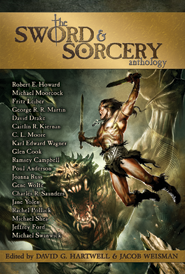 Anyone who’s read The Universal Mirror may be aware that I cut my teeth on old sword and sorcery novels as a teenager. There’s just something about that school of adventure fantasy that brings me joy and so, when I received an advance reader copy of The Sword and Sorcery Anthology from Tachyon Publications, I was ecstatic but also, I confess, a little concerned. I hadn’t read the genre in a long time and there’s something about holding to the myths of childhood. I didn’t want to open the pages and discover that, in fact, what I recalled of these stories wasn’t what they actually had been.
Anyone who’s read The Universal Mirror may be aware that I cut my teeth on old sword and sorcery novels as a teenager. There’s just something about that school of adventure fantasy that brings me joy and so, when I received an advance reader copy of The Sword and Sorcery Anthology from Tachyon Publications, I was ecstatic but also, I confess, a little concerned. I hadn’t read the genre in a long time and there’s something about holding to the myths of childhood. I didn’t want to open the pages and discover that, in fact, what I recalled of these stories wasn’t what they actually had been.
Oh, I was wrong about that.
This is a fantastic anthology and a great introduction to the genre. The editors (David G. Hartwell and Jacob Weisman) have done a stellar job in compiling a work that spotlights many authors that I would consider pivotal (Robert Howard, Michael Moorcock, Fritz Leiber…the list goes on) while also featuring those that I’ve always thought of in the context of other work. (Ramsey Campbell, for instance, who I associate with his excellent horror stories.) The list of stories is extensive and can be located at Tachyon’s website.
Among my favorites in this work was “The Unholy Grail” by Fritz Leiber. A Grey Mouser story, this piece is among the most evocative in the genre with description that trembles on the border of dark fantasy. The wizard’s apprentice finds himself caught in the webs cast by a young woman and her father. Testing where her loyalties lie is the only way that Mouse decides he can escape and this results in a series of twists and turns that reminded me once again why Leiber has always been a personal favorite.
Another standout for me was “The Adventuress” by Joanna Russ. Russ is an author that I’m not familiar with (though I know of her). The thing that I appreciated most in this tale was the subtle interactions at its heart. It is a story of two women–rare enough in this genre–but the dynamic between these women was incredibly intriguing to me. I was never quite certain how they stood in relation to one another emotionally and while in other hands, this might have been maddening, the delicacy with which Russ handled it was what made this story work. It was a good balance and somewhat unexpected in an anthology of this genre.
Inclusion of those kinds of pieces is really what makes The Sword and Sorcery Anthology a great primer to fantasy and gives it its heart. There is plenty of action in the book–swordfights, magic, and feats of daring–but the editors have struck a good balance between stories that focus on those aspects with others that give us a more introspective glance at character. While I know that this is a genre that not all readers are interested in (and I will freely admit that some of the older pieces in this may seem dated to our age), this book is definitely worth checking out.
About the Book:
The Sword and Sorcery Anthology, edited by David G. Hartwell and Jacob Weisman
432 pages.
Available in a number of formats, including via Amazon.



July 22, 2012
Guest Post: Magic and Science
Today on A Fe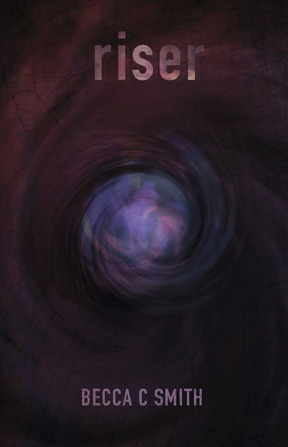 w Words, Becca C. Smith, author of Riser speaks about two things I love: magic and science. Welcome to the blog, Becca!
w Words, Becca C. Smith, author of Riser speaks about two things I love: magic and science. Welcome to the blog, Becca!
Magic and Science
by Becca C. Smith
Magic and Science…
Can a book have both? At first I didn’t think so. In my teen fiction book Riser it started out as strictly science fiction, but the more I created the dystopian future, the more I realized that a combination of magic and science was exactly the right formula.
On one hand there’s Age-pro, a drug that stops the aging process. And since Riser takes place in 2320 and Age-pro was invented in 2020, there are people that are over three hundred years old and still look twenty. That’s the science aspect.
Then there’s my main character, Chelsan, who has an innate power to control the dead. She wasn’t born with this gift. It was accidently given to her when her father sacrificed himself to save Chelsan and her mother in a black magic ritual. That’s the magic aspect.
I found that combining science fiction with rituals and magic ended up being the perfect combination. It gave me so much more freedom to play and experiment with ideas and concepts that would have been limited if I had only picked one.
The research alone was as fun as writing the book itself. It wasn’t just the research in science that was exciting. It was actually the research of Vodun and VooDoo that were the most interesting. There are a lot of spells and rituals that people perform today including one to raise the dead.
Magic and science, though they appear to be opposites, actually fit together in a way that made writing Riser an amazing experience. It gave me great material to create an action-packed story in a messed up world.
About the Author
Becca C Smith received her Film degree from Full Sail University and has worked in the Film and Television industry for most of her adult life.
Becca is the author of the teen horror/sci-fi novel, Riser. She is also the co-author of the teen graphic novel Ghost Whisperer: The Haunted and also wrote and illustrated Little Family Secrets, a graphic novel based on the true story of her great aunt who was famous for murdering her husband.
She currently lives in Los Angeles, CA with her husband and two cats Jack and Duke.
Find Becca C. Smith online at:
Website
Facebook
Twitter
Goodreads
Or get your copy of Riser on Amazon!



July 17, 2012
Guest Post: Yearning Holds the Atoms Together
In my urban fantasy, GLORY, the blood of the seventeen-year-old heroine, Glory, contains the cure for a deadly pandemic plague. A witch named Kaia, an angel named Dominic, and a vampire named Zane are assigned to be her bodyguards. In the midst of their quest to save humanity, Glory is overcome by desire for Zane. Then, in her words:
I wondered if he was sharing this intense electromagnetic current with me. At the same time that all of these thoughts and feelings were flooding me, I experienced a dreadful sense of shame that I could have selfish interests at a time of such horror in the world. I glanced across the table and saw Dominic watching me.
“Yearning preceded creation, caused creation, and sustains it,” Dominic said. “It’s what holds the atoms together. Yearning is nothing to be ashamed of.”
Although I am a plot-driven writer, eager to mesmerize my readers with thrilling stories containing unexpected twists and turns and jaw-dropping endings, I found myself focusing a great deal of creative energy on the love stories in The Legend of Glory trilogy.
In PRETTY SACRIFICES, there are three powerful love stories.
The love affair between Glory and her former guardian angel, Dominic, came to life so intensely that it actually made me change the plot of the novel. In my entire writing career, I have never been affected by my characters enough to completely change a previously established and well-developed storyline.
Then there is the ongoing love affair between young witches Kaia and Evan. A psychic predicted their marriage, and the Elders of their respective covens arranged the union even before the couple could meet. Despite her growing affection for Evan, Kaia rebels at the medieval notion of an arranged marriage. This love affair inspired the second time characters have caused me to make a complete plot change midway through writing a novel.
Finally, there is the mysterious love affair between cowboy-vampire Zane and his long-dead wife, Hope. I explored quantum physics and quantum entanglement in order to make the time-travel plot scientifically plausible, and when the novel steps back in time, I think I penned the single most romantic love affair of my career.
As quantum mechanics proves, yearning is what holds the atoms together. Dominic the angel reminded us of that. And I hope my writing reinforces that ultimate truth.
To learn more about PRETTY SACRIFICES, please visit the website: www.GloryLegend.com
Copyright © 2012 - Devin O’Branagan
ABOUT PRETTY SACRIFICES:
In the post-apocalyptic world following a pandemic, dark angels arrive in Glory’s small hometown to claim the eternal souls of her loved ones. Targeted by evil because of her heroism during the great plague, Glory fights back with the help of gutsy young witch Kaia, inexperienced guardian angel Sasha, and her intrepid demon-fighting dog Hallelujah. Complicating everything, a rift in time reunites Glory with an old flame and forces her to pay a huge price for love. The legend of Glory continues!
The second book in the Legend of Glory trilogy!
Glory was nominated for the 2011 Best Popular Paperback for Young Adults List, sponsored by the Young Adult Library Services Association (YALSA) of the American Library Association.
AUTHOR BIO:
Bestselling author Devin O’Branagan writes novels about uncommon heroes. Her genres include young adult urban fantasy, paranormal thrillers, and comic mysteries. She also writes a humor column for TAILS Magazine, is a member of the Dog Writers Association of America, and many of her writing projects support animal rescue. All of her books are available in both print and eBook formats. Visit her website at www.DevinWrites.com
PRETTY SACRIFICES is available in both print and eBook formats.
www.GloryLegend.com has links to most of the places where PRETTY SACRIFICES may be purchased: http://www.devinwrites.com/legendofglory.html And while there, check out photographs of all the characters from the novel and see a very cool book trailer video!
Smashwords (versions compatible with Apple, iPad, Sony, Kobo, & most every type of eReader)
DevinsBookstore – Autographed copies of the paperback may be purchased directly from the author at her online bookstore.





